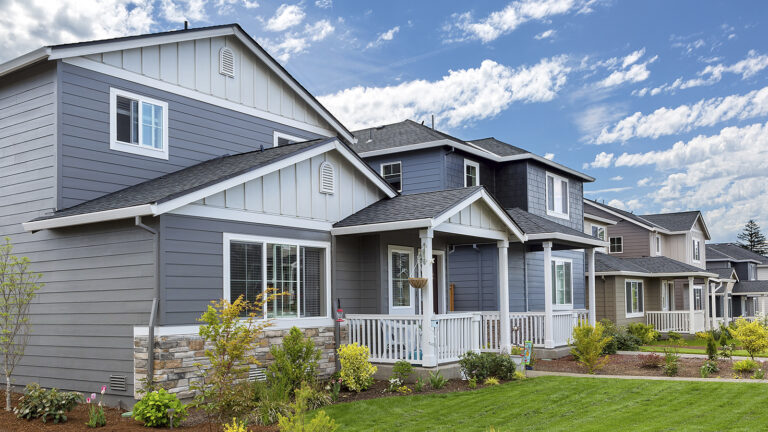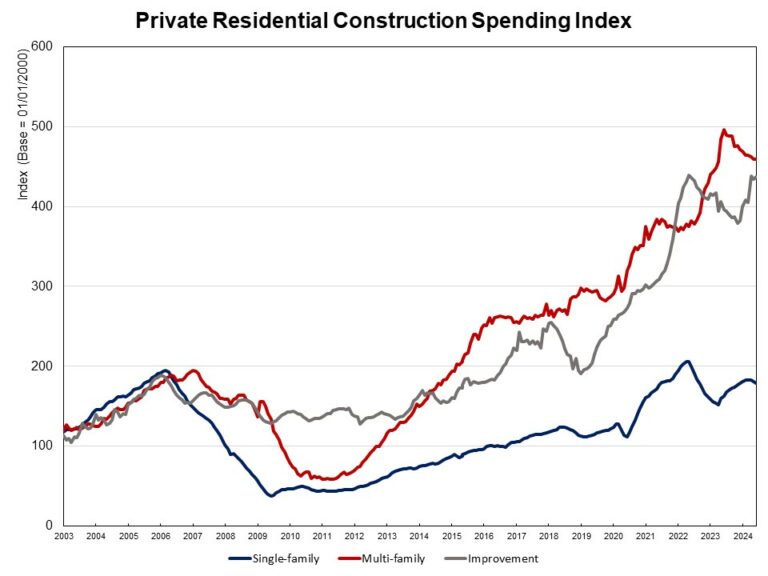Confidence in the market for new multifamily housing declined year-over-year in the second quarter of 2024, according to results from the Multifamily Market Survey (MMS) released today by the National Association of Home Builders (NAHB). The MMS produces two separate indices: The Multifamily Production Index (MPI) had a reading of 44, a decrease of 12 points year-over-year, while the Multifamily Occupancy Index (MOI) had a reading of 81, falling eight points year-over-year.
Multifamily developers are less optimistic than they were at this time last year, given high interest rates and limited financing availability to develop multifamily properties. However, financial markets may become more stable later in the year, as recent weak economic data make it more likely that the Federal Reserve will cut interest rates.
Multifamily Production Index (MPI)
The MPI is a weighted average of four key market segments: three in the built-for-rent market (garden/low-rise, mid/high-rise, and subsidized) and the built-for-sale (or condominium) market. The survey asks multifamily builders to rate the current conditions as “good”, “fair”, or “poor” for multifamily starts in markets where they are active. The index and all its components are scaled so that a number above 50 indicates that more respondents report conditions as good rather than poor.
Even though all four of the components posted year-over-year declines in the second quarter, sentiment about production of garden/low-rise apartments and subsidized apartments remained in positive territory above 50. The component measuring garden/low-rise fell 11 points to 53, the component measuring subsidized units decreased four points to 51, the component measuring built-for-sale units posted a seven-point decline to 38, and the component measuring mid/high-rise units dropped 18 points to 29 (Figure 1).
Multifamily Occupancy Index (MOI)
The MOI is a weighted average of the three built-for-rent market segments (garden/low-rise, mid/high-rise and subsidized). The survey asks multifamily builders to rate the current conditions for occupancy of existing rental apartments, in markets where they are active, as “good”, “fair”, or “poor”. Similar in nature to MPI, the index and all its components are scaled so that a number above 50 indicates more respondents report that occupancy is good than report it as poor.
Although still well above 50, all three components for the MOI experienced year-over-year declines. The component measuring garden/low-rise fell nine points to 82, mid/high-rise units decreased seven points to 76, and subsidized units decreased six points to 85 (Figure 2).
The MMS was re-designed last year to produce results that are easier to interpret and consistent with the proven format of other NAHB industry sentiment surveys. Until there is enough data to seasonally adjust the series, changes in the MMS indices should only be evaluated on a year-over-year basis.
Please visit NAHB’s MMS web page for the full report.
Discover more from Eye On Housing
Subscribe to get the latest posts sent to your email.
This article was originally published by a eyeonhousing.org . Read the Original article here. .


